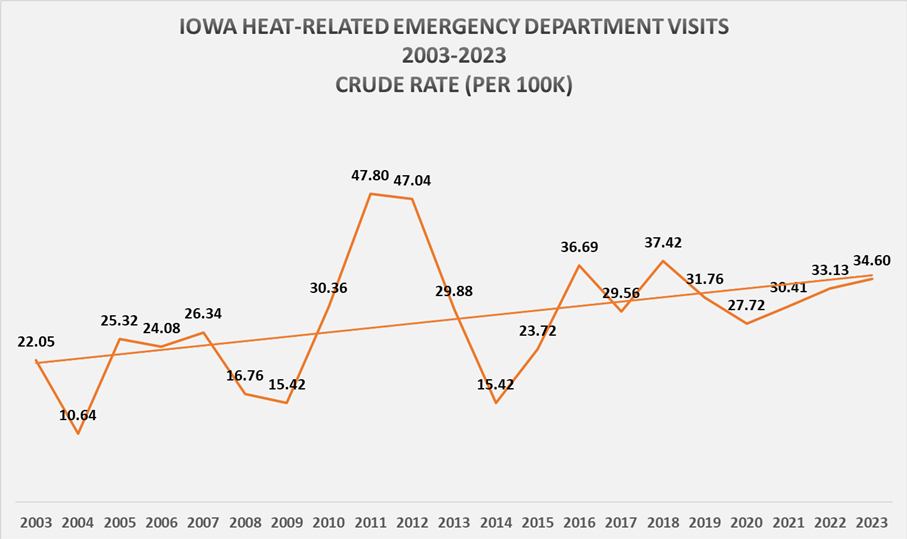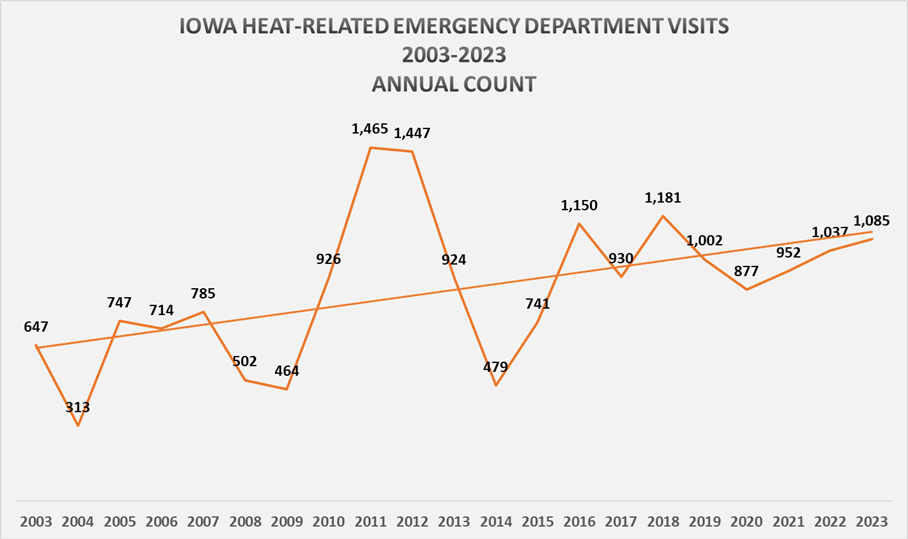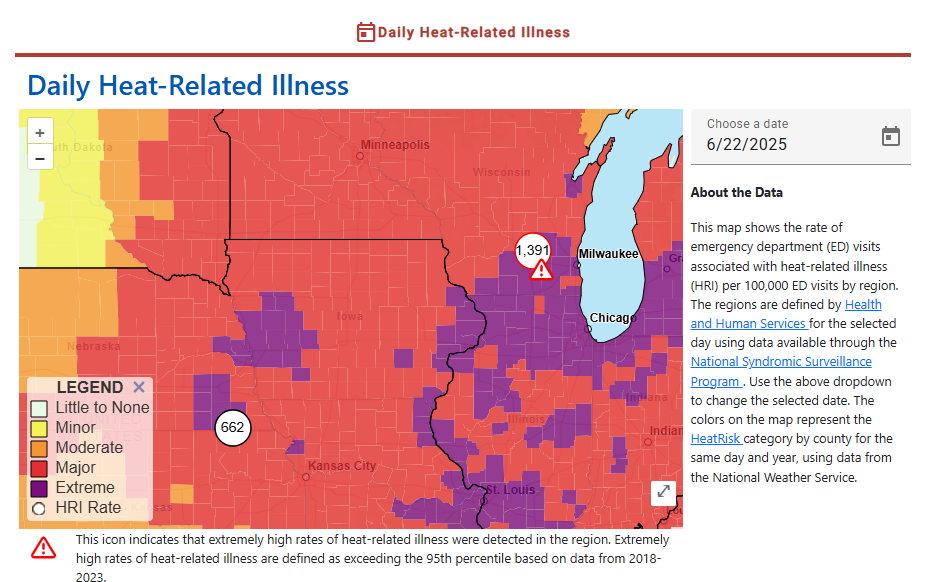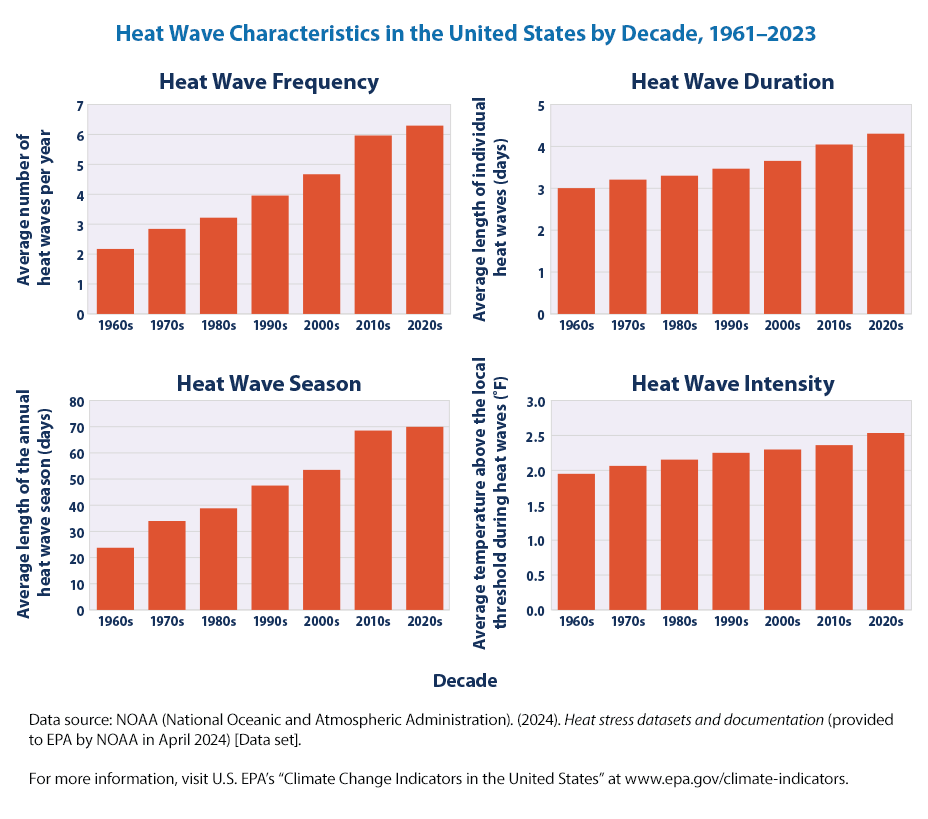Iowa's Blazing Temps are Driving Rise in Heat-Related Illnesses
posted
by Cody Smith on Friday, July 25, 2025
Heat waves are the deadliest form of natural disasters in the U.S., and Iowa has not been spared from this growing threat. According to a recent peer-reviewed study, the number of heat-related deaths increased from 1,069 in 1999 to 2,325 in 2023, representing an increase of 117% in the number of heat-related deaths in the U.S. in just over two decades.
Iowans’ Health Risks are Growing
In Iowa, the number of heat-related emergency department visits is also on the rise. According to the Iowa Department of Health and Human Services, the average rate of heat-related emergency department visits between 2003 and 2023 was 28.39 per 100,000 Iowans. With the exception of 2020 (when more people were confined to their homes due to the COVID pandemic), Iowa’s rate has been above average since 2016.

On an actual count basis, the number of Iowans visiting the emergency room for heat-related illnesses is also on the rise, with the statewide average between 2003 and 2023 being 875 visits per year. However, since the end of 2015, every year has been above that statewide average, sometimes by as many as 306 visits per year as seen in 2018.

Just halfway through 2025, Iowa has already dealt with a sweltering multi-day heat wave in June and is currently under a heat dome that threatens public health and community infrastructure. The heat wave that hung over the state in June caused extreme risks to human health and drove increases in heat-related emergency department visits.

Infrastructure Impacts Further Endanger Health
In addition to the increase in heat-related emergency department visits, the June heat wave also had visible impacts on local infrastructure. For example, a road in Ankeny buckled as a result of the sweltering heat, leading to a lane closure and road repairs.
These heat waves also pose major threats to other infrastructure, including drinking water systems. For example, extreme heat has been known to create ideal conditions for algal blooms which produce a toxin known as microsystin. This toxin is a threat to drinking water quality and is already emerging as a challenge to Iowa’s water utilities, including Des Moines Water Works.
The reliability of the energy grid is also severely impacted by extreme heat, partly due to increased demand from cooling systems during heat waves and from the impact of the elevated temperatures on grid transmission and potentially knocking some generation assets offline. The North American Electric Reliability Corporation (NERC) says that more than 300 million people in the U.S. and Canada could face electricity shortages between 2024 and 2028, further endangering the health of Iowans, especially those who rely on medical equipment to maintain their quality of life.
Preparedness is Within Our Control
Extreme heat is a growing challenge for our state, and Iowa’s policymakers need to prioritize new ways of thinking to prepare for this emerging climate reality. Humans have caused these changes in our climate and how we respond to them to maintain community resilience is within our control. Heat waves are increasing and ignoring the issue will no longer be a viable strategy if we want to protect the health of our communities.
